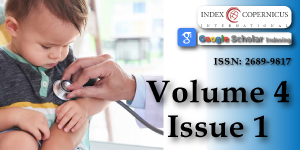The role of urine metabolomics among newborn infants with hypoxic ishaemic encephalopathy: a literature review
Main Article Content
Abstract
Background: Perinatal asphyxia (PA) which may result in hypoxic ischaemic encephalopathy (HIE) affects four million neonates worldwide and accounts for the death of one million of affected babies. The science of metabolomics has become an area of growing interest in neonatal research, with a potential role in identifying useful biomarkers that can accurately predict injury severity in perinatal asphyxia and HIE.
The aim of this review is to look at the evidence of the usefulness of urine metabolomics in predicting outcome in PA/HIE.
Methods: The key words used in the advanced search ‘urine metabolomics’ AND ‘perinatal asphyxia’ OR ‘hypoxic ischaemic encephalopathy’, yielded 13 articles.
Results: Of the selected thirteen studies, 38% (n = 5) were human studies, 31% (n= 4) were animal studies and 31% (n = 4) were review articles. The studies confirmed the involvement of known pathways in the development of PA/HIE, primarily the Krebs cycle evidenced by accumulation of TCA cycle intermediates (citrate, α-ketoglutarate, succinate) and anaerobic pathways indicated by increased lactate. Other pathways involved include amino acid and carbohydrate pathways.
Conclusion: Metabolomic studies so far are promising in highlighting potential biomarker profiles in PA/HIE. Further research is necessary to further clarify the role of identified metabolites in predicting outcome and prognosis in neonates affected by PA/HIE.
Article Details
Copyright (c) 2021 Gadzama N, et al.

This work is licensed under a Creative Commons Attribution 4.0 International License.
Fattuoni C, Palmas F, Noto A, Fanos V, Barberini L. Perinatal asphyxia: a review from a metabolomics perspective. Molecules (Basel, Switzerland). 2015; 20: 7000–7016. PubMed: https://pubmed.ncbi.nlm.nih.gov/25898414/
Denihan NM, Boylan GB, Murray DM. Metabolomic profiling in perinatal asphyxia: a promising new field. BioMed Res Int. 2015: 254076. PubMed: https://pubmed.ncbi.nlm.nih.gov/25802843/
Ramaswamy V, Horton J, Vandermeer B, Buscemi N, Miller S, et al. Systematic review of biomarkers of brain injury in term neonatal encephalopathy. Pediatric Neurol. 40: 215–226. PubMed: https://pubmed.ncbi.nlm.nih.gov/19218035/
Fanos V, Van den Anker J, Noto A, Mussap M, Atzori L. Metabolomics in neonatology: fact or fiction? Semin Fetal Neonatal Med. 2013; 18: 3–12. PubMed: https://pubmed.ncbi.nlm.nih.gov/23195852/
Baker M. Metabolomics: from small molecules to big ideas. Nat Methods. 2011; 8: 117–121.
Atzori L, Xanthos T, Barberini L, Antonucci R, Murgia F, et al. A metabolomic approach in an experimental model of hypoxia-reoxygenation in newborn piglets: urine predicts outcome. J Matern Fetal Neonatal Med. 2010; 23 Suppl 3: 134–137. PubMed: https://pubmed.ncbi.nlm.nih.gov/20873980/
Skappak C, Regush S, Cheung PY, Adamko DJ. Identifying hypoxia in a newborn piglet model using urinary NMR metabolomic profiling. PloS ONE. 8: e65035. PubMed: https://pubmed.ncbi.nlm.nih.gov/23741447/
Fanos V, Noto A, Xanthos T, Lussu M, Murgia F, et al. Metabolomics network characterization of resuscitation after normocapnic hypoxia in a newborn piglet model supports the hypothesis that room air is better. BioMed Res Int. 2014; 731620. PubMed: https://pubmed.ncbi.nlm.nih.gov/24696864/
Sachse D, Solevåg AL, Berg JP, Nakstad B. The Role of Plasma and Urine Metabolomics in Identifying New Biomarkers in Severe Newborn Asphyxia: A Study of Asphyxiated Newborn Pigs following Cardiopulmonary Resuscitation. PloS ONE. 2016; 11: e0161123. PubMed: https://pubmed.ncbi.nlm.nih.gov/27529347/
Chu CY, Xiao X, Zhou XG, Lau TK, Rogers MS, et al. Metabolomic and bioinformatic analyses in asphyxiated neonates. Clinical Biochem. 2006; 39: 203–209. PubMed: https://pubmed.ncbi.nlm.nih.gov/16460720/
Longini M, Giglio S, Perrone S, Vivi A, Tassini M, et al. Proton nuclear magnetic resonance spectroscopy of urine samples in preterm asphyctic newborn: a metabolomic approach. Clin Chim Acta. 2015; 444: 250–256. PubMed: https://pubmed.ncbi.nlm.nih.gov/25727514/
Noto A, Pomero G, Mussap M, Barberini L, Fattuoni C, et al. Urinary gas chromatography mass spectrometry metabolomics in asphyxiated newborns undergoing hypothermia: from the birth to the first month of life. Ann Transl Med. 2016; 4: 417. PubMed: https://www.ncbi.nlm.nih.gov/pmc/articles/PMC5124630/
Sarafidis K, Efstathiou N, Begou O, Soubasi V, Agakidou E, et al. Urine metabolomic profile in neonates with hypoxic-ischemic encephalopa-thy. Hippokratia. 2017; 21: 80–84. PubMed: https://www.ncbi.nlm.nih.gov/pmc/articles/PMC6239088/
Locci E, Noto A, Puddu M, Pomero G, Demontis R, et al. A longitudinal 1H-NMR metabolomics analysis of urine from newborns with hypoxic-ischemic encephalopathy undergoing hypothermia therapy. PloS ONE. 2018; 13: e0194267. PubMed: https://pubmed.ncbi.nlm.nih.gov/29668681/
Sánchez-Illana Á, Piñeiro-Ramos JD, Kuligowski J. Small molecule biomarkers for neonatal hypoxic ischemic encephalopathy. Semin Fetal Neonatal Med. 2020; 25: 101084. PubMed: https://pubmed.ncbi.nlm.nih.gov/31983670/
Reinke SN, Broadhurst DI. Moving metabolomics from a data-driven science to an integrative systems science. Gen Med. 2012; 4: 85.
Efstathiou N, Theodoridis G, Sarafidis K. Understanding neonatal hypoxic-ischemic encephalopathy with metabolomics. Hippokratia. 2017; 21: 115–123. PubMed: https://www.ncbi.nlm.nih.gov/pmc/articles/PMC6248003/

